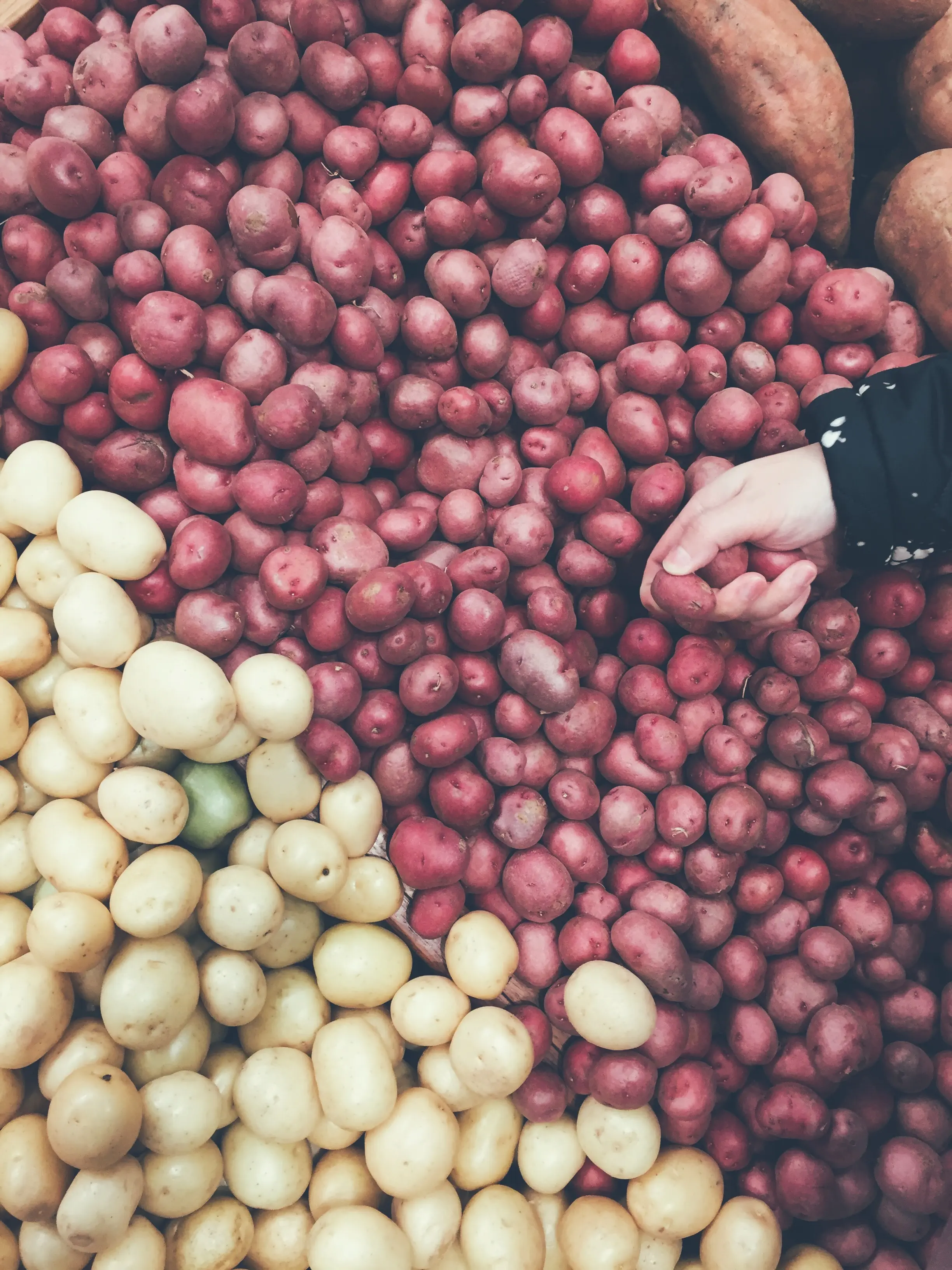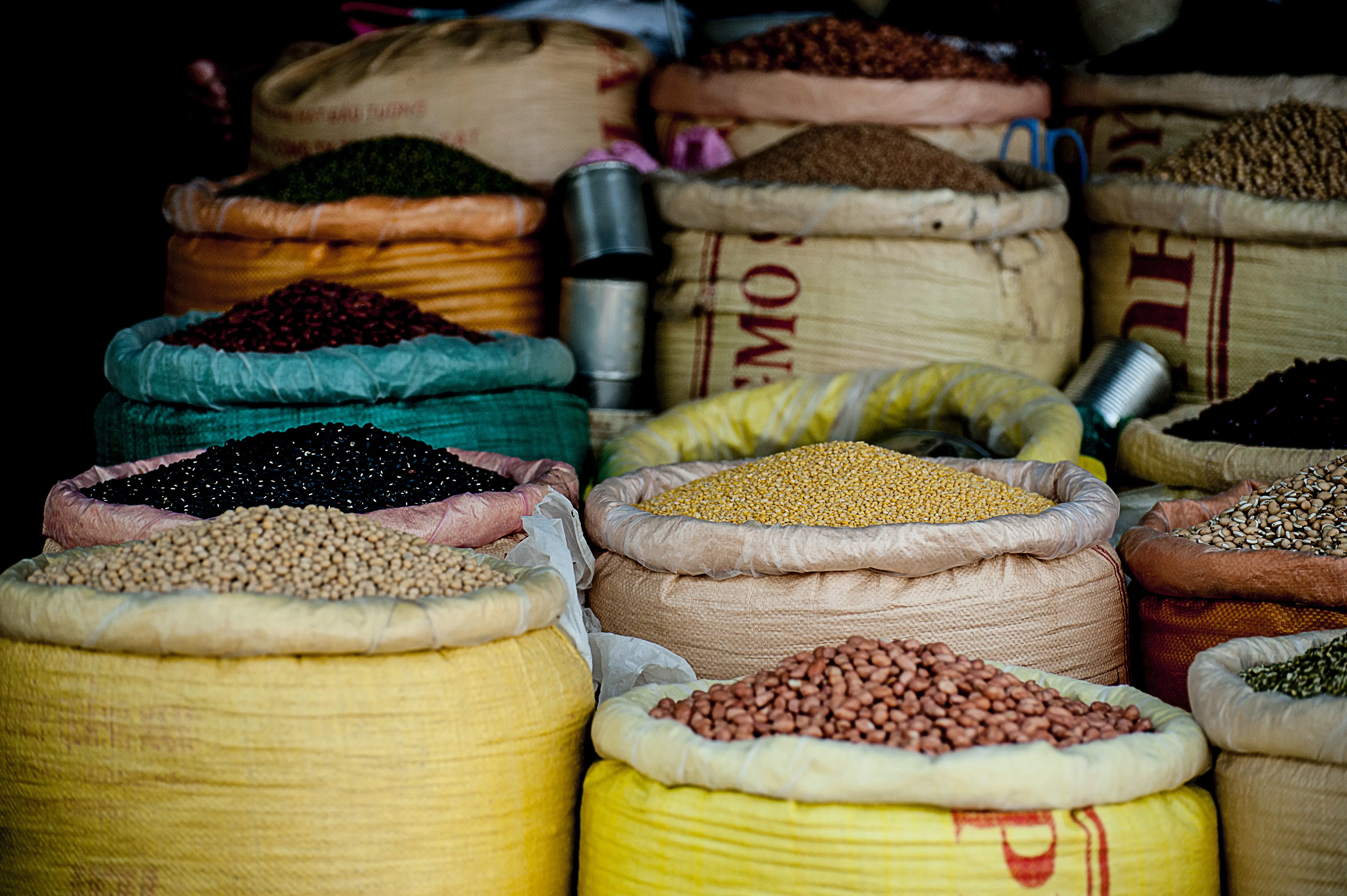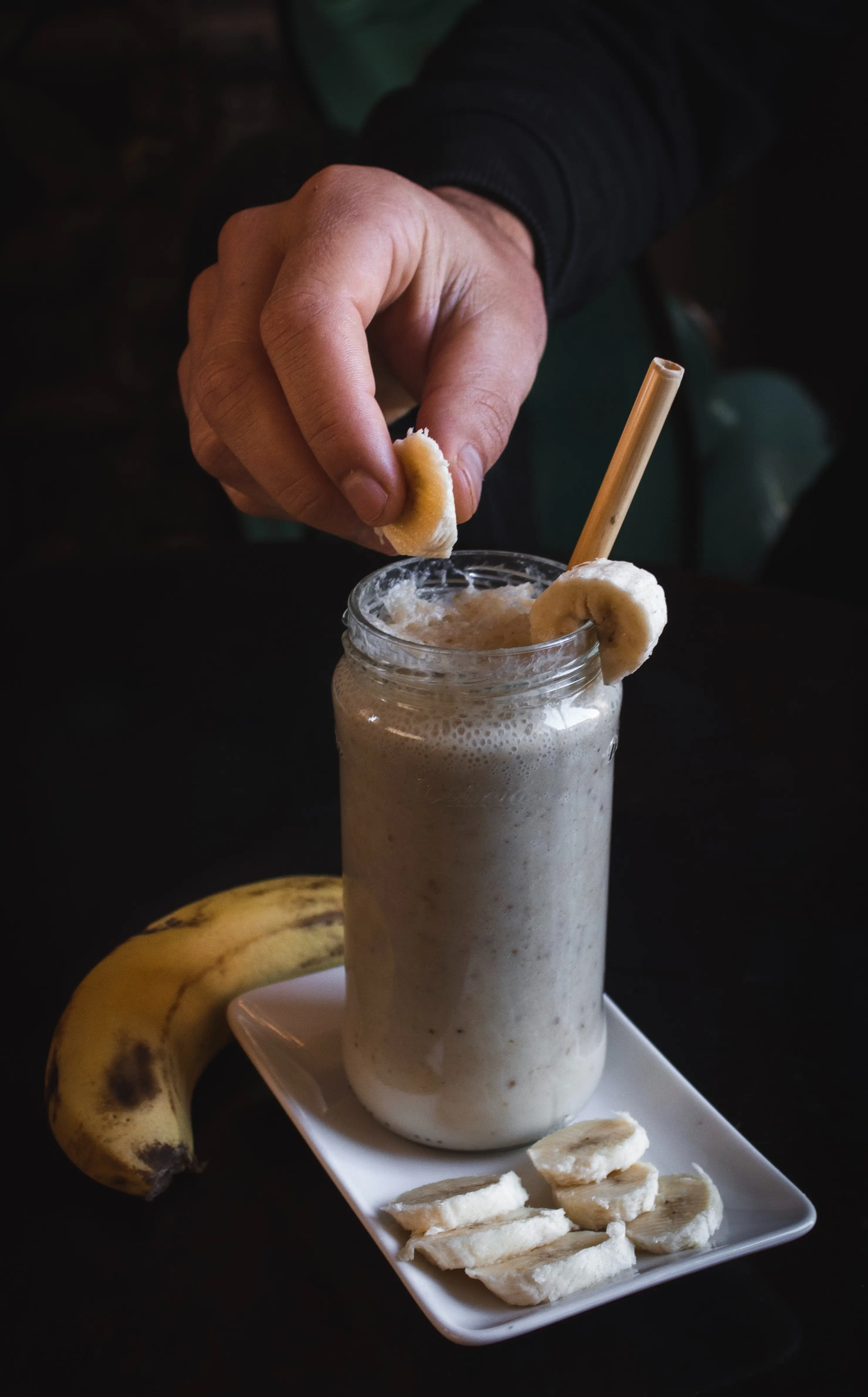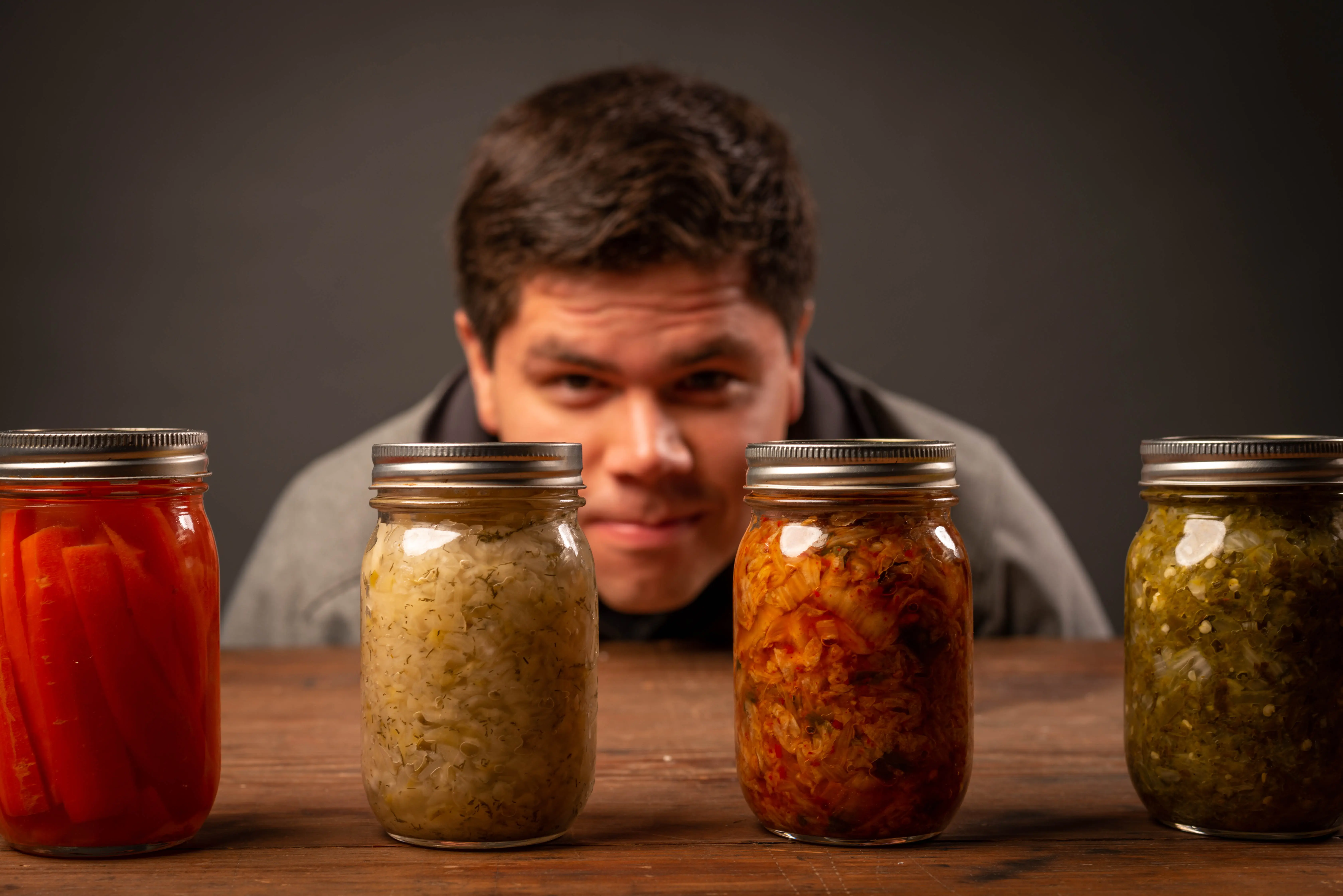Some of the links in this post are affiliate links. This means if you click on the link and purchase the item, we will receive an affiliate commission from the vendor at no extra cost to you. These business relationships allow us to keep bringing you great EatMoveHack content. All opinions remain our own.
You might have heard about resistant starches while trying to explore healthy eating options! So, what are resistant starches and what are their health benefits?
Keep reading to find out!
Starch – An Introduction
Before we go on discussing resistant starches, let’s first take a look at what starch really is.

Starch is a form of carbohydrate that contains chains of glucose. When you eat food that contains starch (like potatoes), your body breaks down the starch into single glucose units. These glucose units are then absorbed into your bloodstream and used to provide energy for you!
Your body cannot absorb starch on its own without breaking it down because starch particles are too large.
The first step in breaking down starch is in your mouth through the action of saliva. Your saliva breaks up starch into simpler carbohydrates called maltose.
After swallowing the starch it makes its way through your digestion system ultimately making its way into the small intestine. There, the body works harder to break it down even more into its smallest form – glucose. Your body can quickly absorb glucose into the bloodstream putting the glucose to quick work providing energy for your cells.
So How is This Starch Different
Resistant starch is the starch that goes through your digestive system without being broken down and absorbed! Going through the upper part of the system it acts more like soluble fiber.
So, above when we talked about the breakdown in the small intestine – converting it from starch to glucose – well, that doesn’t happen with this special starch. Therefore, it acts more like a fiber than starch in your diet. It could be called a “digestion resistant starch” to be more precise.
Once it hits the large intestine the food is then fermented and essentially eaten by the good bacteria.
When you eat these types of starches they help keep you full, but you get very few calories from them because they’re not absorbed – they are fermented and consumed by your flora. This makes them a great addition to your already healthy diet!
Let’s take a look at some of the other benefits of resistant starches.
Benefits of Resistant Starches
Your gut contains a normal flora consisting of bacteria (healthy bacteria that are good for you) and the resistant starches feed these bacteria and give them the nutrition they need. Feeding the good bacteria of your body is crucial. We want to eliminate bad gut bacteria (through proper diet) and grow/sustain the good bacteria. These good bacteria, in turn, produce vitamin K and other essential components required for your body.
Here are a few more benefits to consider:
- They make you feel like you’re full without adding a lot of calories to your diet. Thus, they prevent over-eating and can help in weight loss.
- They provide bulk in your gut and play a role similar to fibers. They form the bulk in your intestine as other foods are digested. This bulk helps in the movements of the intestine and prevents constipation and diarrhea.
- The breakdown of these special starches by bacteria in the gut releases a fatty acid that reduces inflammation and improves gut health. This can help combat inflammatory diseases of the gut like inflammatory bowel disorder.
- Increased insulin sensitivity leads to better insulin resistance. Improved insulin sensitivity helps prevent the development of type 2 diabetes. Moreover, they also regulate your blood sugar levels and prevent glucose spikes, which can cause hunger and fluctuations in mood.
- They don’t cause bloating as much as fibers do because they release less gas.
These were a few of the many benefits of eating resistant starches!
Foods that are High in Resistant Starches

To incorporate these “miracle” starches into your diet, it’s important to first find out which foods are high in these starches. Here are some of the foods that contain a high amount of these miracle starches. They can be broken down into 4 primary categories:
- Category 1: These are your grains, seeds, beans, and legumes. These are naturally resistant because of their cell wall structure physically protecting them from digestion.
- Category 2: These are what are called “granular starch”. These types of granular starches are found primarily in raw potatoes, basmati rice, green bananas, and some types of corn.
- Category 3: These are what are often referred to as “retrograded starch”. This happens after cooling starchy foods after cooking. With this exposure to cold temperatures, the “normal” starches are converted into a resistant form of starch.
- Category 4: These are “man-made” starches that are chemically modified to make them resistant to digestion.
The amount of these healthy starches in certain foods changes with the temperature. For example, ripened bananas have a lower amount of resistant starch when compared to green bananas because as bananas ripen at a higher temperature, their resistant starch is converted into normal starch which is digested. So, food can go from resistant to “normal” starch just like it can go the other way – from normal to retrograde. The act of cooking or ripening changes the molecular structure of foods.
One quick note on cooked pasta. There is evidence to suggest that cooking, cooling, and then reheating (or eating cold) pasta also makes the starch more resistant. If pasta is an absolute necessity in your pantry, this is one way that you can “indulge” in pasta while also enjoying more possible benefits. However, recognize that pasta is not a natural food and that’s why it didn’t make the list of foods that naturally contain resistant starch.
This information can help you incorporate resistant starches into your diet.
List of RS Foods:
Here is a list of whole foods that you can incorporate into your diet if you are looking for some resistant starch. This is not intended to be an exhaustive list:
- Raw Oats (this is why an overnight soaking recipe is key)
- Garbanzo beans
- Green Bananas
- Lentils
- Black beans
- Raw potatoes (also cooked and cooled and then reheated)
- Yams
- Sweet potatoes (try cooked and cooled and then reheated)
- Pinto Beans
- Rice (try cooked and cooled and then reheated)
- Hi-Maize Flour
- Potato Starch (uncooked) – Here is a great option
- Kidney beans
- Barley
Tips on Incorporating Resistant Starch into Your Diet

- Studies suggest that a healthy target amount of RS will fall into the range of 15-30 grams per day.
- If you plan on eating rice or boiled potatoes, try to make them a few hours in advance and then cool them in the refrigerator. This will increase the resistant starch quantity in them. After that, heat them again whenever you want to eat them.
- Have oats and milk for breakfast. Try adding the milk to oats the night before and then refrigerate the mixture. Eat the next morning! Here is a great recipe for overnight oats.
- Add lentils to your diet!
- Many recipes require flour. You can substitute about 1/5th of the flour with a source of resistant starch that’s heat stable.
- There are many resistant starch supplements out there for you to use. However, always try using natural sources of resistant starch instead and go for the supplements as a last option!
Don’t forget to drink plenty of water throughout the day because water helps resistant starch pass through your gut!
Resistant Starches and Colorectal Cancer
Studies have also demonstrated that the intake of RS has been shown to decrease the incidence of colorectal cancer! The starches play a protective role in your gut and prevent mutations and other changes that may lead to the development of cancer. While there are no full-proof dietary changes to avoid any forms of cancer, anything you can do to help place you in a better spot is an advantage.
Thus, it’s a great idea to add resistant starches to your diet!
Frequently Asked Questions

Are there any side effects?
Resistant starches don’t have any inherently harmful side effects, but they might make you feel a little bloated at the beginning. Resistant starches from natural sources (such as lentils, oats, barley, etc.) are fermented very slowly so gas is released at a slower rate when compared to other fibers!
Are resistant starches a type of fiber?
Great news – resistant starches are now considered a type of fermentable fiber.
How much should I eat per day?
Set a target of about 15-30 grams of resistant starch per day to improve your gut health!
Am I already consuming resistant starch in my diet?
Yes, most people are already consuming resistant starch in their diet. However, they’re consuming only half of the amount recommended per day! Therefore, you need to increase your resistant starch food sources and incorporate them into your diet.
Can I add these starches to food items that I want to bake?
Generally, baking reduces the resistant starch amount in many foods. However, different types of resistant starch exist. For baking, you should use the chemically modified version of resistant starches that don’t break down with heat!
So, what are you waiting for? Add resistant starches to your diet and experience a positive change in your gut health! Resistant starches also help you lose weight along with increasing your sensitivity to insulin and improving your blood glucose levels!
Here are some great other EMH articles that can help you on your Eat Move Hack life journey!
If you’re finding it hard to lose weight, maybe some more extreme measures are in order. Find out what’s right for you?

